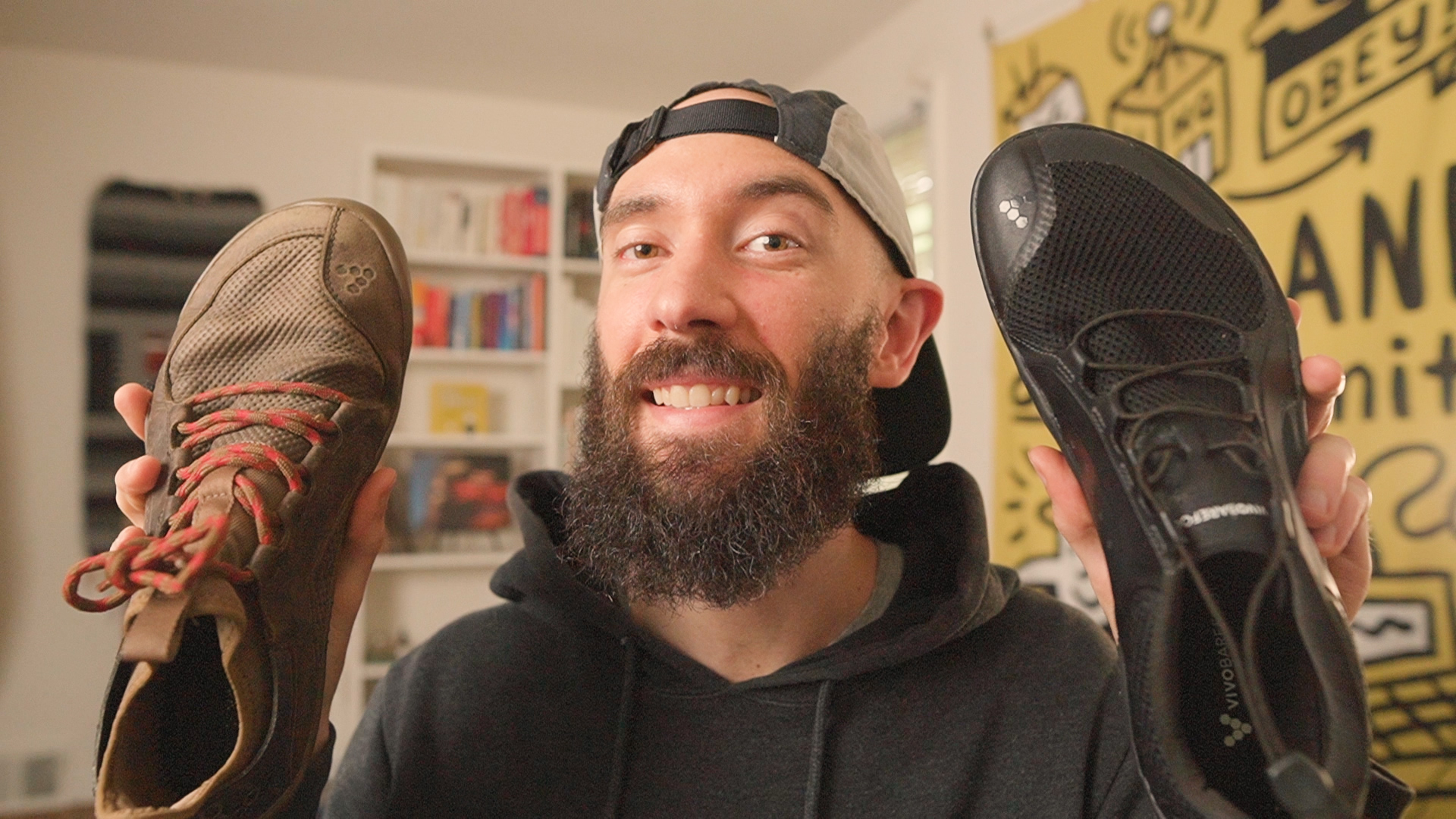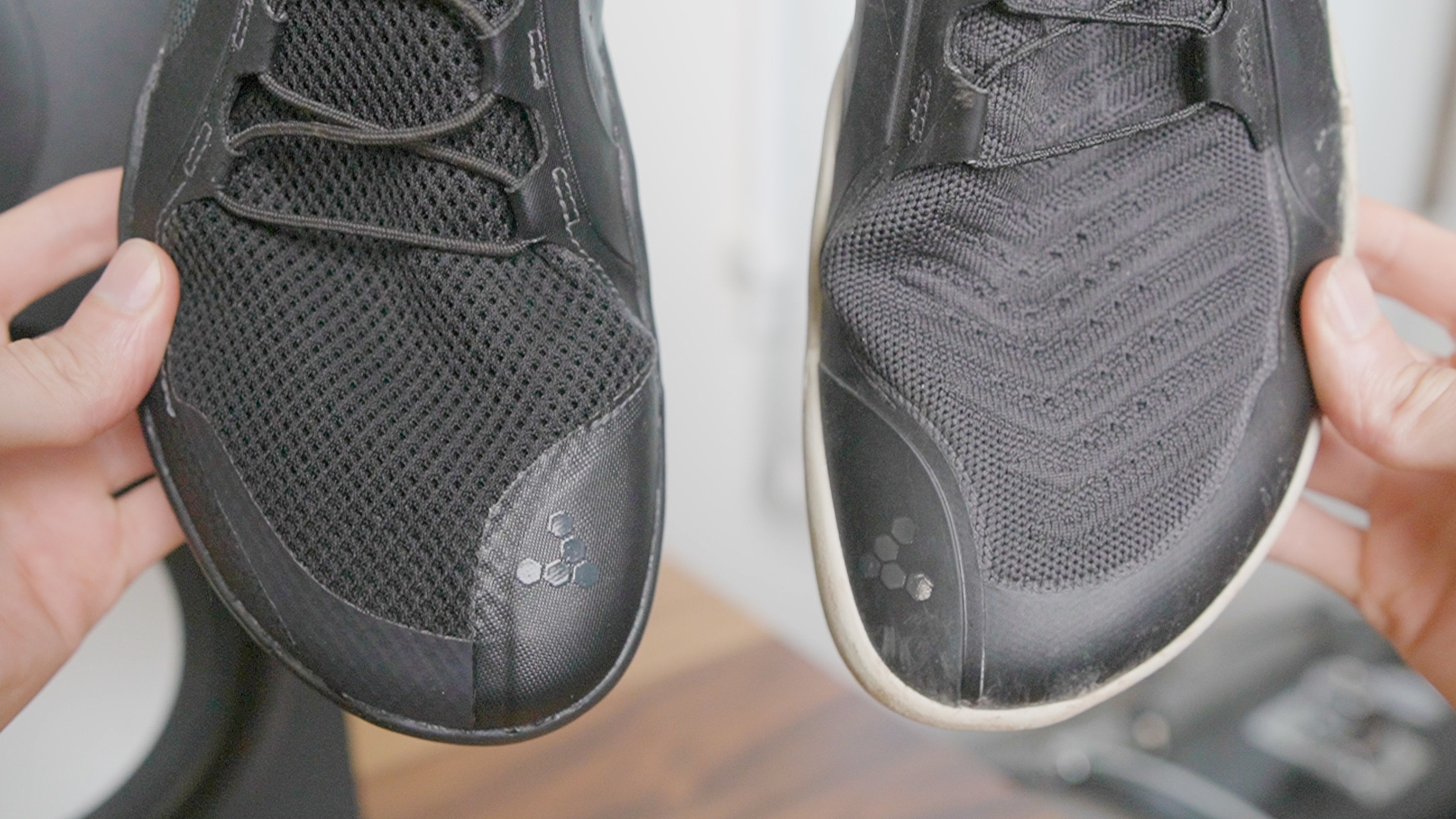Hello, my name’s Andrew, and this review is covering the longterm pros and cons of the Vivobarefoot Primus Trail FG vs Knit for hiking and trail running.
Introduction
Back in 2017 the original Vivobarefoot Primus Trek was one of my first zero-drop shoes, and it was the perfect do-it-all option for hiking and trail running, but when it got discontinued I bought a pair of Primus Trail FG’s, and then Knit’s.
Which are both similar and super versatile, but they do have some key differences, so let’s talk about why you might go with one vs the other.

1. Vivobarefoot Primus Trail FG
First off, the Vivobarefoot Primus Trail FG is a bit lighter at 267 grams, but also more protective with denser reinforcement panels for extreme terrain and a more open design, which works well for hotter climates and faster hikes/runs.
Content type (syncedBlock) not found.
Features
Up front the Primus Trail FG has a slimmer medium-width toebox with tons of lightweight mesh for breathability, as well as a drawstring lace system for quickly taking the shoe on/off, and some perforated heel padding for a great lockdown.
Content type (syncedBlock) not found.
Underneath there’s a FG1 sole with some great flexibility, as well as a set of firm-ground lugs that can handle rocks, mud, and some occasional roads.
Content type (syncedBlock) not found.
Testing
Mainly, I use the FG’s for trail running when I’m going to be somewhere with lots of rocks, roots, and thorns that could tear up a thinner shoe, or if I’m hiking on a hot humid day and need something more substantial than sandals.
Content type (syncedBlock) not found.
Generally, I don’t use them for winter hiking, because they can be a bit drafty, but they can still work for trail running, since my body temperature is usually high, and layering Injinji merino wool toe socks does help, although the thicker protection sometimes causes pressure or crimping issues.
Content type (syncedBlock) not found.
2. Vivobarefoot Primus Trail Knit FG
Secondly, the Vivobarefoot Primus Trail Knit FG is more mid-weight at 307 grams, although less rigid, thanks to the flexible reinforcement panels, and capable of handling all but the most extreme trails.
Content type (syncedBlock) not found.
Features
Up front the Primus Trail Knit has a wide toebox that’s made even more roomy by the stretchy knit fabric, which also provides more volume for raised arches, as well as a similar drawstring quick-lace system to the FG, but with a more minimal slip-on back that’s convenient, while still maintaining a solid lockdown.
Content type (syncedBlock) not found.
Underneath you’ve got the same FG1 sole, which feels and performs exactly the same as it does on the Primus Trail FG, so no difference there.
Testing
Most of the time I end up wearing the Knit over the FG, because the slip-on back is faster to put on and the knit material feels more comfortable, plus I don’t notice the extra 15% weight-wise, and I like that it looks less technical, which makes it more versatile for casual.
Content type (syncedBlock) not found.
For cooler days the knit upper provides better wind/water resistance, although it breathes well enough in hot weather too, and it’s nice not to have any crimping issues, although I do have to be more careful around thorns, which can easily hook onto the top of the toebox.
Content type (syncedBlock) not found.
Conclusion
Overall, the Vivobarefoot Primus Trail FG and Knit are both great picks, but the main differences are aesthetics, comfort vs protection, and width.
Alternatives
In terms of similar bareofot trail shoes…
Content type (syncedBlock) not found.
Resources
If you’d like to support the channel, you can use the code FOLTSY10 for 10% off Vivobarefoot, but you can also browse and filter more products at barefootwear.org or watch my Zero-Drop Transition video to learn more about barefooting.
Finally, if you have a question about the Vivobarefoot Primus Trail Knit or FG, or about barefoot shoes in general, let me know in the comments.
Thanks for reading, catch ya next time. Peace!
Andrew Folts
Andrew is a writer/filmmaker who creates video guides and reviews for a community of 31K+ creative rebels on YouTube.
